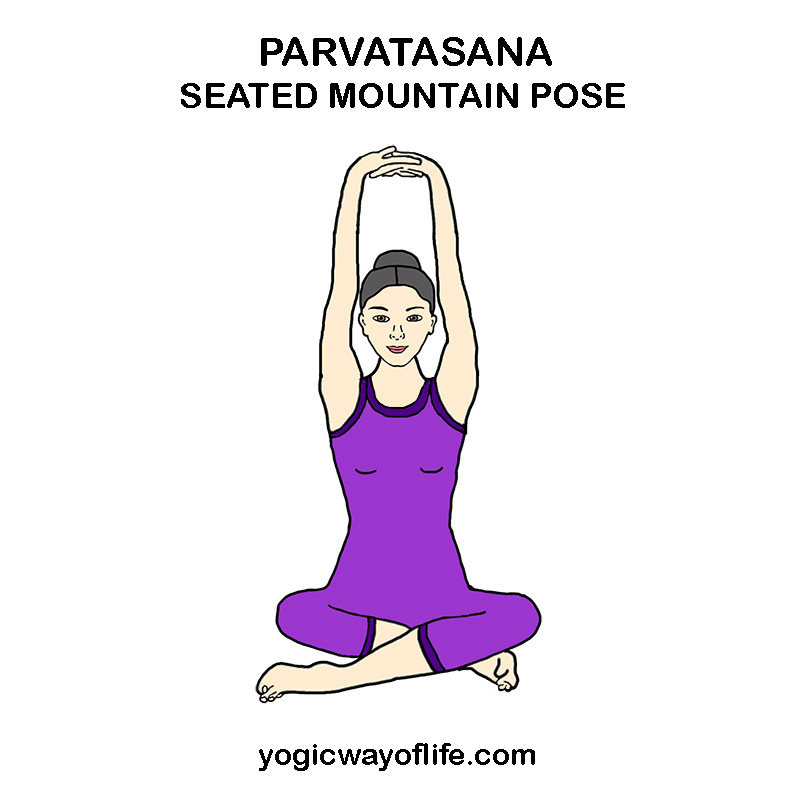The Seated Mountain Pose or the seated Parvatasana gives a good stretch to the trunk, waist and shoulders. In Sanskrit, Parvat means a mountain and asana means a pose. In this posture, the body is stretched to look like a mountain. The seated mountain pose is good posture to release the stress in the shoulders and the trunk.

How to do Seated Mountain Pose (Seated Parvatasana)?
- Start in any comfortable sitting posture like Sukhasana, Padmasana or Ardha Padmasana. You may even do this sitting on a chair if that is more convenient.
- Take the hands forward and interlock the fingers.
- Turn the palms outwards and stretch out the hands in front of you.
- Now raise the hands above the head with the palms turned upwards towards the roof.
- Give a good stretch to the body and align the head, trunk and hands in a straight line.
- Gaze straight ahead in a relaxed way and breathe normally. Relax the whole upper body, yet keep it straight and firm.
- Remain in this position for as long as comfortable. Breathe normally and steadily in this final position. The lower body, below waist should be stable. The body above the waist should be straight and stable, yet relaxed. Become aware the straight spine with the aligned and expanded chest.
- The posture can be released after about a minute. Also, if you experience aching of the hands or shoulders, you can release the pose as and when you feel the pain. To release the pose, turn the palm inwards and bring down the hands.
- Release the finger lock and let the palms rest on the thighs.
- One can rest and continue to the next round of the practice.
- Do as many rounds as you feel comfortable.
Benefits of Seated Mountain Pose (Seated Parvatasana)
- Seated Mountain Pose gives a good stretch to the spine.
- It improves the alignment of the spine.
- It can remove shoulder and back pain.
- This pose can calm down the mind and is a relaxation pose.
- Seated Mountain Pose relaxes the upper body and can be practiced before meditation.
